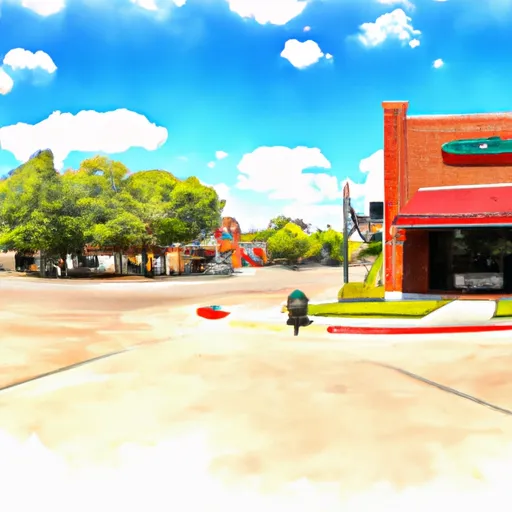-
 Snoflo Premium
Snoflo Premium
Get unlimited access to all our content
With no Ad interruptions! - Start Your Free Trial Login with existing account
Midlothian
Eden Index
Climate
9.7
•
Recreation
3.5
•
Community
4.1
•
Safeguard
6.1/10

Midlothian, Texas is a thriving city located in Ellis County, just 25 miles southwest of Dallas. The climate in Midlothian is categorized as humid subtropical, with hot and humid summers and mild winters. Summers are typically hot, with temperatures often exceeding 90°F, while winters are mild, with average temperatures ranging from 35-60°F.
Hydrologically, Midlothian is situated in the Trinity River Basin and is primarily fed by the Waxahachie and Chambers Creek. These water sources play a crucial role in the region's water supply and support various aquatic ecosystems.
Midlothian offers plenty of outdoor recreation opportunities for nature enthusiasts. Pecan Grove Park is a popular destination for families, featuring playgrounds, picnic areas, and walking trails. Additionally, the Midlothian Community Park provides access to hiking and biking trails, as well as tennis and basketball courts. For golf enthusiasts, the beautiful Tangle Ridge Golf Club offers an 18-hole course with scenic views.
In conclusion, Midlothian, Texas boasts a humid subtropical climate, with hot summers and mild winters. It is home to the Waxahachie and Chambers Creek, which contribute to the region's hydrology. Outdoor enthusiasts can enjoy various recreational activities in parks and trails scattered throughout the city.
What is the Eden Index?
The Snoflo Eden Index serves as a comprehensive rating system for regions, evaluating their desirability through a holistic assessment of climate health, outdoor recreation opportunities, and natural disaster risk, acknowledging the profound impact of these factors on livability and well-being.
Climate Health Indicator (CHI): 9.7
Midlothian receives approximately
972mm of rain per year,
with humidity levels near 78%
and air temperatures averaging around
19°C.
Midlothian has a plant hardyness factor of
8, meaning
plants and agriculture in this region tend to thrive here all year round.
By considering the ideal temperature range, reliable water supplies, clean air, and stable seasonal rain or snowpacks, the Climate Health Indicator (CHI) underscores the significance of a healthy climate as the foundation for quality living.
A healthy climate is paramount for ensuring a high quality of life and livability in a region, fostering both physical well-being and environmental harmony. This can be characterized by ideal temperatures, reliable access to water supplies, clean air, and consistent seasonal rain or snowpacks.
Weather Forecast
Streamflow Conditions
Upper Trinity
Area Rivers
Upper Trinity
Snowpack Depths
Upper Trinity
Reservoir Storage Capacity
Upper Trinity
Groundwater Levels
Recreational Opportunity Index (ROI): 3.5
The Recreational Opportunity Index (ROI) recognizes the value of outdoor recreational options, such as parks, hiking trails, camping sites, and fishing spots, while acknowledging that climate plays a pivotal role in ensuring the comfort and consistency of these experiences.
Access to outdoor recreational opportunities, encompassing activities such as parks, hiking, camping, and fishing, is crucial for overall well-being, and the climate plays a pivotal role in enabling and enhancing these experiences, ensuring that individuals can engage in nature-based activities comfortably and consistently.
Camping Areas
| Campground | Campsites | Reservations | Toilets | Showers | Elevation |
|---|---|---|---|---|---|
| Falls on the Brazos Park | 15 | 335 ft | |||
| Walnut Creek Resort | 25 | 650 ft | |||
| Texoma Marina | None | 651 ft | |||
| Brier Creek - Lake Texoma | None | 656 ft | |||
| Juniper Point - Lake Texoma | None | 655 ft | |||
| Buncombe Creek - Lake Texoma | None | 659 ft | |||
| Isle du Bois - Roberts Lake State Park | 182 | 685 ft | |||
| Johnson Branch - Roberts Lake State Park | 163 | 685 ft | |||
| Little Elm Park | None | 547 ft | |||
| Cedar Bayou Marina - Lake Texoma | None | 647 ft |
Nearby Ski Areas
Catastrophe Safeguard Index (CSI):
The Catastrophe Safeguard Index (CSI) recognizes that natural disaster risk, encompassing floods, fires, hurricanes, and tornadoes, can drastically affect safety and the overall appeal of an area.
The level of natural disaster risk in a region significantly affects safety and the overall livability, with climate change amplifying these risks by potentially increasing the frequency and intensity of events like floods, fires, hurricanes, and tornadoes, thereby posing substantial challenges to community resilience and well-being.
Community Resilience Indicator (CRI): 4.1
The Community Resilience Indicator (CRI) recognizes that education, healthcare, and socioeconomics are crucial to the well-being of a region. The CRI acknowledges the profound impact of these elements on residents' overall quality of life. By evaluating educational resources, healthcare accessibility, and economic inclusivity, the index captures the essential aspects that contribute to a thriving community, fostering resident satisfaction, equity, and social cohesion.

